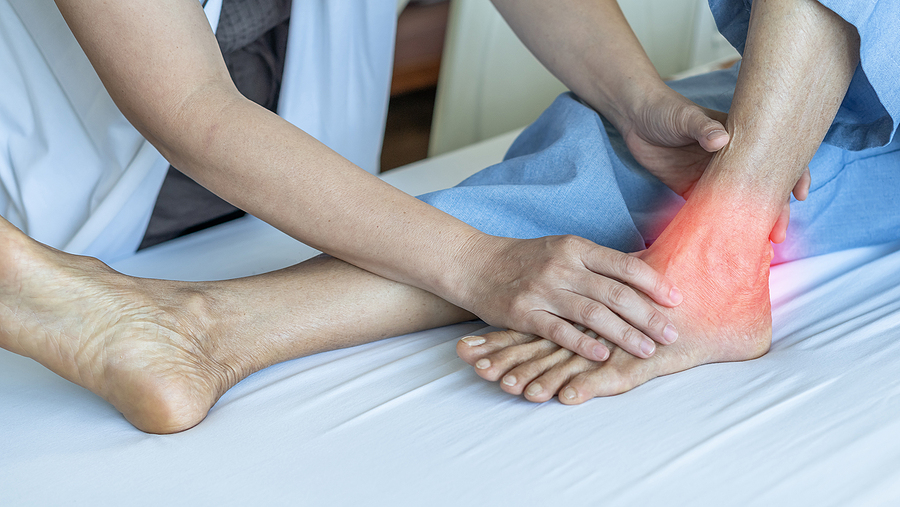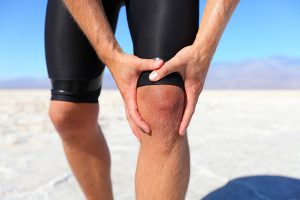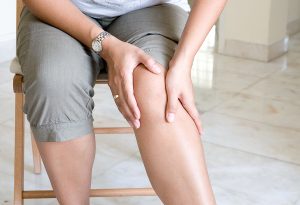Tendonitis is a painful condition caused by inflammation within a tendon. It’s often caused by wear and tear or damage to the tissue over time. It’s common in the shoulder’s rotator cuff where repetitive over-the-head arm movements cause small tears in the tissue. However, tendonitis may appear in any joint, such as the elbow, heel, knee, and wrist.
When it comes to tendonitis, it’s more prevalent in people 40 or older. In a study of Achilles tendonitis, around 3 out of 10 runners developed it over time. Long-distance runners were more likely. Tendonitis of the knee is more prevalent in people who play basketball, football, soccer, or volleyball. Rotator cuff injuries were most common in baseball, particularly pitchers. However, playing sports isn’t the only risk factor.
What Causes Tendonitis?
Tendonitis occurs when damage occurs to the tissue within a tendon. A tendon’s role is to secure a muscle to a bone. When a joint moves, the tendon connecting the muscle to the bones in the joint stretches. In a healthy tendon, stretching is tolerated. Sometimes, however, the stretching leads to small tears and that damage can trigger inflammation. If there’s too much strain on the tendon, it could rupture.
Think of it like this. You use a large rubber band to secure the top of a trash bag over your kitchen waste basket. The rubber band is stretchy and pliable for months. One day, it’s not as elastic as it used to be. A few weeks later, you notice it’s starting to form small tears on the edges. If you keep using it anyway, it’s going to snap. A damaged tendon needs time to heal or the same thing will happen.
The damage to a tendon is often caused by one of the following.
- Age – A tendon simply starts to weaken due to aging.
- Chronic Conditions – Tendonitis can be caused by chronic health conditions like autoimmune diseases, diabetes, high blood pressure, and rheumatoid arthritis.
- Excessive Activity and Use – Overuse injuries are common, which is why people with specific jobs like painting or construction and those who play sports are likely to experience tendonitis.
- Genetics – In a study of twins, it was found that in 2 out of 5 twins, if one sibling developed tendonitis, another did later on.
- Medications – Some medications, such as cortisone, quinolone antibiotics, and statins, impact tendon health with excessive use.
- Sudden Injury – A tendon might be perfectly fine, but a sudden injury causing severe damage or strain impacts it.
What Are the Symptoms to Look For?
How do you know when you have tendonitis? It can depend on the location. Normally, your joint is going to be painful. It may ache and throb, or you might feel sharp stabbing pain. It hurts to touch it.
Tendonitis causes swelling, so a joint may appear puffy and swollen. You won’t find it easy to move the joint, and it becomes difficult to do things with your hand, arm, shoulder, knee, or wherever the tendon is inflamed.
In the hand, tendonitis may affect a finger. Pain radiates from the fingers, and the joint may freeze up and release with a snap, which is known as trigger finger. If you have a finger that is painful and gets stuck in a flexed position before snapping back into an extended position, you have digital flexor tendonitis.
How Is Tendonitis Diagnosed?
A diagnosis starts by making an appointment with your doctor. You’ll often be referred to a sports and orthopedic specialist. You’ll discuss the issue, and the doctor will assess your range of motion, the pain you feel, and how tender that joint is.
If images are needed, a CT scan or MRI may be ordered, but it’s not always necessary. Most cases of tendonitis are diagnosed through a physical exam. If the pain is severe, scans can help determine if the tendon has ruptured.
Explore the Best Treatment Options for Tendonitis
Often, the best treatment for tendonitis is the same as you’d use for a strain – RICE (Rest, Ice, Compression, Elevation). You need to slow down and give your tendon time to heal. While you’re taking it easy, use anti-inflammation over-the-counter pain medications (NSAIDs) like ibuprofen to control pain and inflammation. Don’t use that joint if possible. A compression bandage can help immobilize it.
NSAIDs may not be enough. You may need to have a corticosteroid injection to ease pain while your tendon heals. This isn’t always the best choice and is often recommended only for certain joints, but it’s an option your doctor may discuss with you.
Newer options like PRP and stem cell treatments provide a non-surgical treatment option. With PRP, your blood is drawn and processed to extract the platelet-rich plasma (PRP) that’s injected into the tendon to aid in healing. Stem cell treatments are similar. Your blood is drawn and stem cells are extracted and injected to aid in healing.
For a tendon rupture, surgery is possible. With a tendon rupture surgery, your surgeon makes a small incision over the tendon and stitches the ends of the tendon together. It can be done under regional anesthesia, and you often go home the same day.
If you need surgery, you’ll be in a splint or bandages to restrict motion. Expect it to take upwards of two months before you’re able to return to light activities or three months for heavier activities. It takes about six months before your tendon is fully healed.
Once it heals, whether you need surgery or not, physical therapy is something you should seriously consider. It helps strengthen muscles, restore range of motion, and improve flexibility.
Is it Possible to Prevent Tendonitis?
Before any outdoor activity or sporting event, make sure you warm up. Take your time. Don’t dive right into the action. A proper warm-up is essential for getting the muscles and joints ready for movement. After a game, allow time for a proper cooldown, too.
The same is true for things like yard work or interior remodeling tasks. If you are planning to paint your ceiling or trim overhead tree branches, warm up the shoulders first. Don’t get right to the task.
Once you’ve done something that stretches your muscles, take time to rest. Don’t push your joints past their limit. If you find yourself far too sore after, it’s time to develop a daily fitness routine that helps stretch and strengthen the muscles. Improve your flexibility and range of motion. An orthopedic specialist and help get you started with a trainer or physical therapist.
Premium Sports and Orthopedics offers comprehensive care for tendonitis. Don’t ignore pain. You risk tearing the tendon. It’s wiser to see an orthopedic specialist at the first twinge and ensure you follow the best possible treatment plan to prevent additional injury to your joint.







